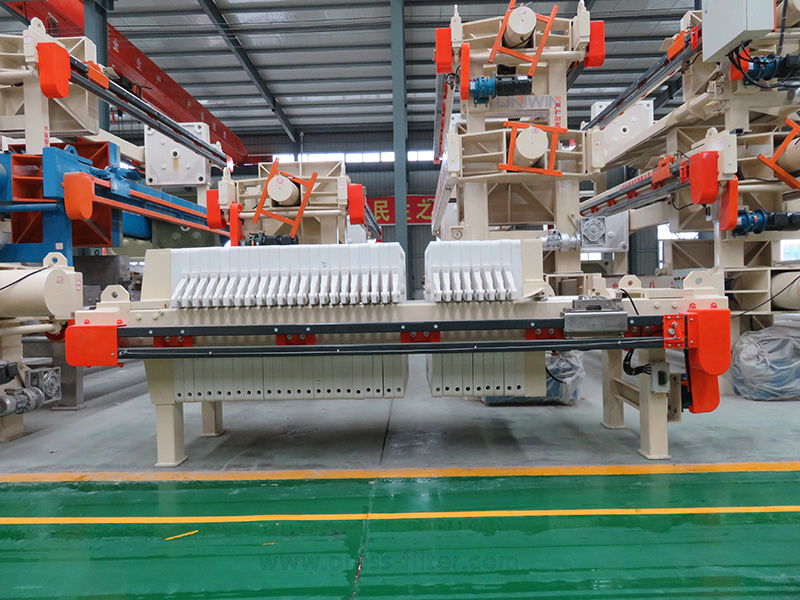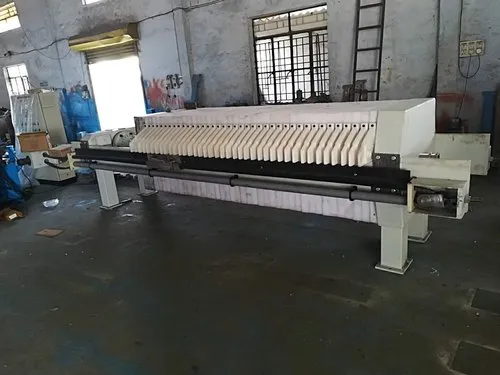In this article, we will provide a comprehensive guide to recessed chamber filter presses and plates, including their definition, types, applications, and benefits.
Recessed chamber filter presses are an essential tool in various industries, including chemical processing, food and beverage, pharmaceuticals, and wastewater treatment.
These filter presses are designed to separate solid and liquid particles, and they are known for their high filtration efficiency and low maintenance.
What are Recessed Chamber Filter Presses?
Recessed chamber filter presses are a type of filter press that consists of a series of plates and frames that are stacked together to form a filter chamber.
The filter chamber is recessed, meaning it is sunken below the level of the plates and frames. This design allows for a larger filtration area, which leads to higher filtration efficiency and lower maintenance costs.
The plates and frames are made of a variety of materials, including metal, plastic, and polypropylene. The plates are designed to withstand high pressure and temperature, and they are corrosion-resistant. The frames are designed to support the plates and provide a tight seal to prevent any leakage.

Types of Recessed Chamber Filter Presses
There are several types of recessed chamber filter presses, including:
1. Plate and Frame Filter Press
This is the most common type of recessed chamber filter press. It consists of a series of plates and frames that are stacked together to form a filter chamber. The plates are separated by a frame, which provides a tight seal to prevent any leakage.
2. Membrane Filter Press
This type of filter press uses a membrane instead of a plate and frame. The membrane is designed to filter out particles and impurities from the liquid, and it can be used in a variety of applications, including food and beverage, pharmaceuticals, and biotechnology.
3. Candle Filter Press
This type of filter press uses a cylindrical filter element, which is designed to filter out particles and impurities from the liquid. The candle filter press is commonly used in chemical processing, food and beverage, and wastewater treatment.
Applications of Recessed Chamber Filter Presses
Recessed chamber filter presses have a wide range of applications in various industries, including:
1. Chemical Processing
Recessed chamber filter presses are commonly used in chemical processing to separate solid and liquid particles. They are used to filter out impurities and contaminants from chemicals, which helps to improve the quality of the final product.
2. Food and Beverage
Recessed chamber filter presses are used in the food and beverage industry to filter out impurities and contaminants from food and beverage products. They are commonly used to filter fruit juice, wine, and dairy products.
3. Pharmaceuticals
Recessed chamber filter presses are used in the pharmaceutical industry to filter out impurities and contaminants from pharmaceutical products. They are commonly used to filter medicines and vaccines.
4. Wastewater Treatment
Recessed chamber filter presses are used in wastewater treatment to separate solid and liquid particles. They are commonly used to filter out impurities and contaminants from industrial wastewater and domestic wastewater.

Benefits of Recessed Chamber Filter Presses
Recessed chamber filter presses have several benefits, including:
1. High Filtration Efficiency
Recessed chamber filter presses have a high filtration efficiency, which means they can filter out a large amount of impurities and contaminants from the liquid. This leads to a higher quality final product and reduced waste.
2. Low Maintenance
Recessed chamber filter presses are designed to be low maintenance, which means they require less downtime and are easier to clean and maintain. This leads to reduced costs and increased productivity.
3. Continuous Operation
Recessed chamber filter presses can operate continuously, which means they can filter large quantities of liquid without the need for interruption. This leads to increased productivity and reduced downtime.